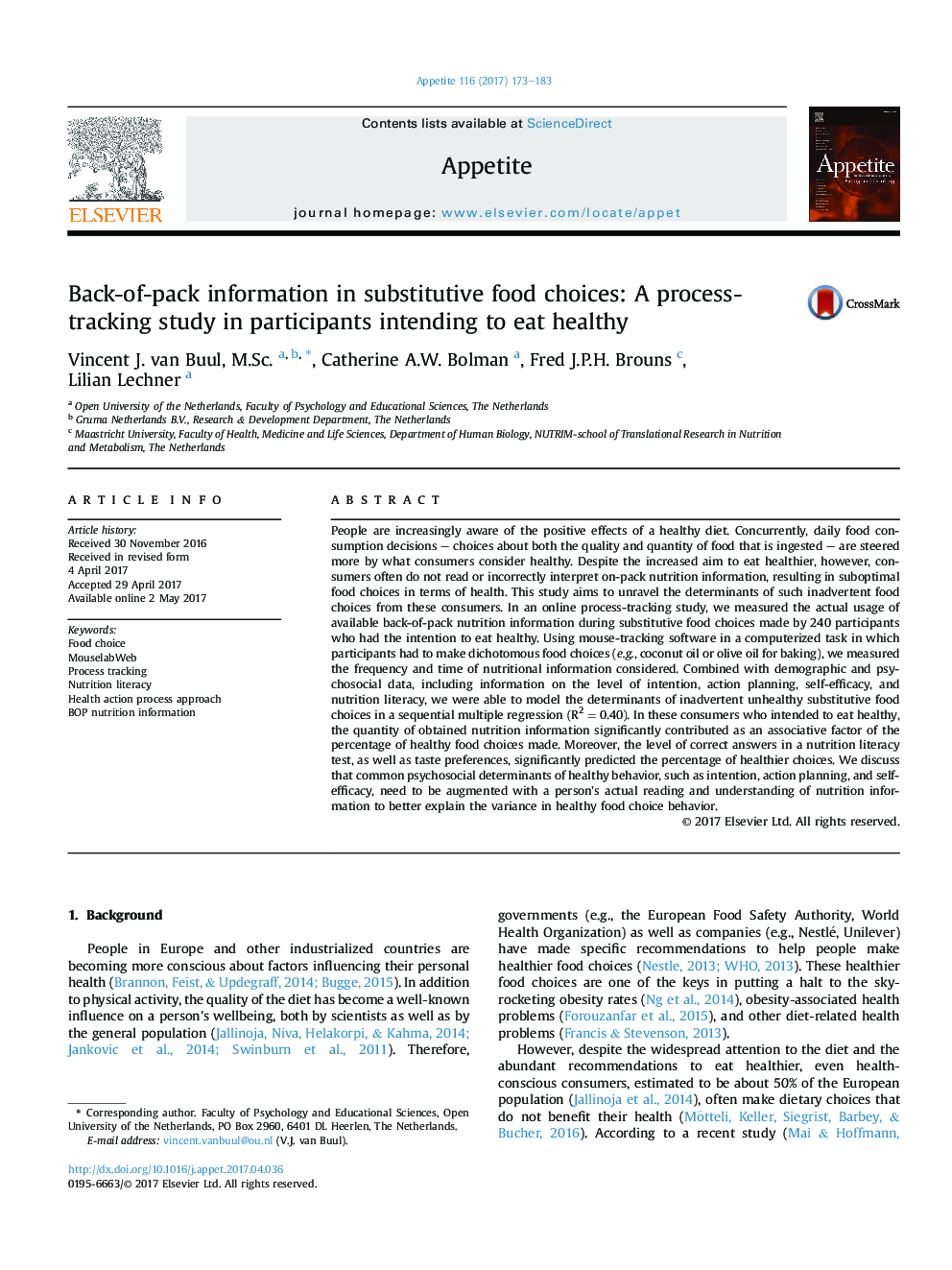| کد مقاله | کد نشریه | سال انتشار | مقاله انگلیسی | نسخه تمام متن |
|---|---|---|---|---|
| 5043996 | 1475364 | 2017 | 11 صفحه PDF | دانلود رایگان |
People are increasingly aware of the positive effects of a healthy diet. Concurrently, daily food consumption decisions - choices about both the quality and quantity of food that is ingested - are steered more by what consumers consider healthy. Despite the increased aim to eat healthier, however, consumers often do not read or incorrectly interpret on-pack nutrition information, resulting in suboptimal food choices in terms of health. This study aims to unravel the determinants of such inadvertent food choices from these consumers. In an online process-tracking study, we measured the actual usage of available back-of-pack nutrition information during substitutive food choices made by 240 participants who had the intention to eat healthy. Using mouse-tracking software in a computerized task in which participants had to make dichotomous food choices (e.g., coconut oil or olive oil for baking), we measured the frequency and time of nutritional information considered. Combined with demographic and psychosocial data, including information on the level of intention, action planning, self-efficacy, and nutrition literacy, we were able to model the determinants of inadvertent unhealthy substitutive food choices in a sequential multiple regression (R2Â =Â 0.40). In these consumers who intended to eat healthy, the quantity of obtained nutrition information significantly contributed as an associative factor of the percentage of healthy food choices made. Moreover, the level of correct answers in a nutrition literacy test, as well as taste preferences, significantly predicted the percentage of healthier choices. We discuss that common psychosocial determinants of healthy behavior, such as intention, action planning, and self-efficacy, need to be augmented with a person's actual reading and understanding of nutrition information to better explain the variance in healthy food choice behavior.
Journal: Appetite - Volume 116, 1 September 2017, Pages 173-183
